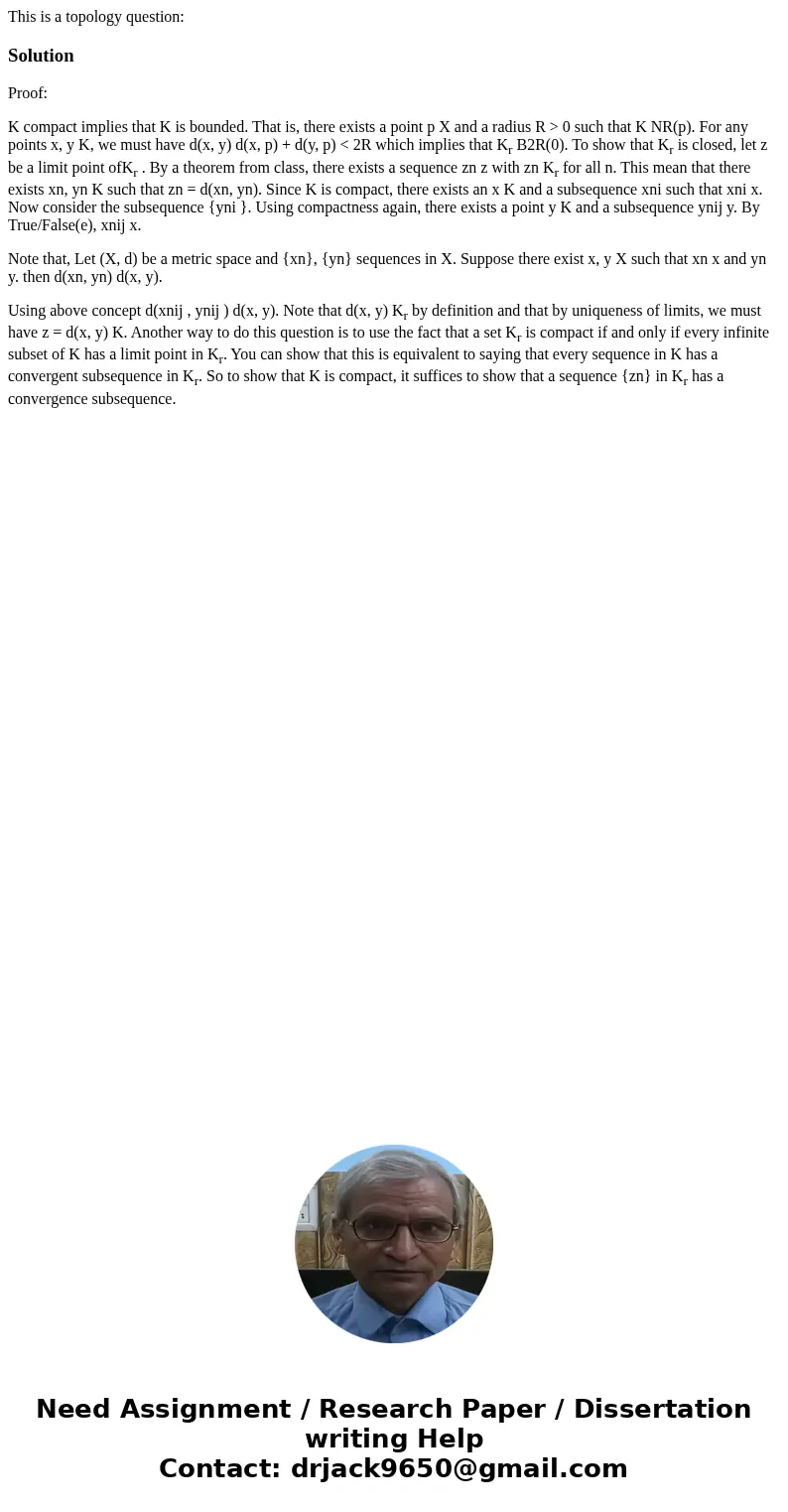This is a topology questionSolutionProof K compact implies t
This is a topology question:
Solution
Proof:
K compact implies that K is bounded. That is, there exists a point p X and a radius R > 0 such that K NR(p). For any points x, y K, we must have d(x, y) d(x, p) + d(y, p) < 2R which implies that Kr B2R(0). To show that Kr is closed, let z be a limit point ofKr . By a theorem from class, there exists a sequence zn z with zn Kr for all n. This mean that there exists xn, yn K such that zn = d(xn, yn). Since K is compact, there exists an x K and a subsequence xni such that xni x. Now consider the subsequence {yni }. Using compactness again, there exists a point y K and a subsequence ynij y. By True/False(e), xnij x.
Note that, Let (X, d) be a metric space and {xn}, {yn} sequences in X. Suppose there exist x, y X such that xn x and yn y. then d(xn, yn) d(x, y).
Using above concept d(xnij , ynij ) d(x, y). Note that d(x, y) Kr by definition and that by uniqueness of limits, we must have z = d(x, y) K. Another way to do this question is to use the fact that a set Kr is compact if and only if every infinite subset of K has a limit point in Kr. You can show that this is equivalent to saying that every sequence in K has a convergent subsequence in Kr. So to show that K is compact, it suffices to show that a sequence {zn} in Kr has a convergence subsequence.

 Homework Sourse
Homework Sourse